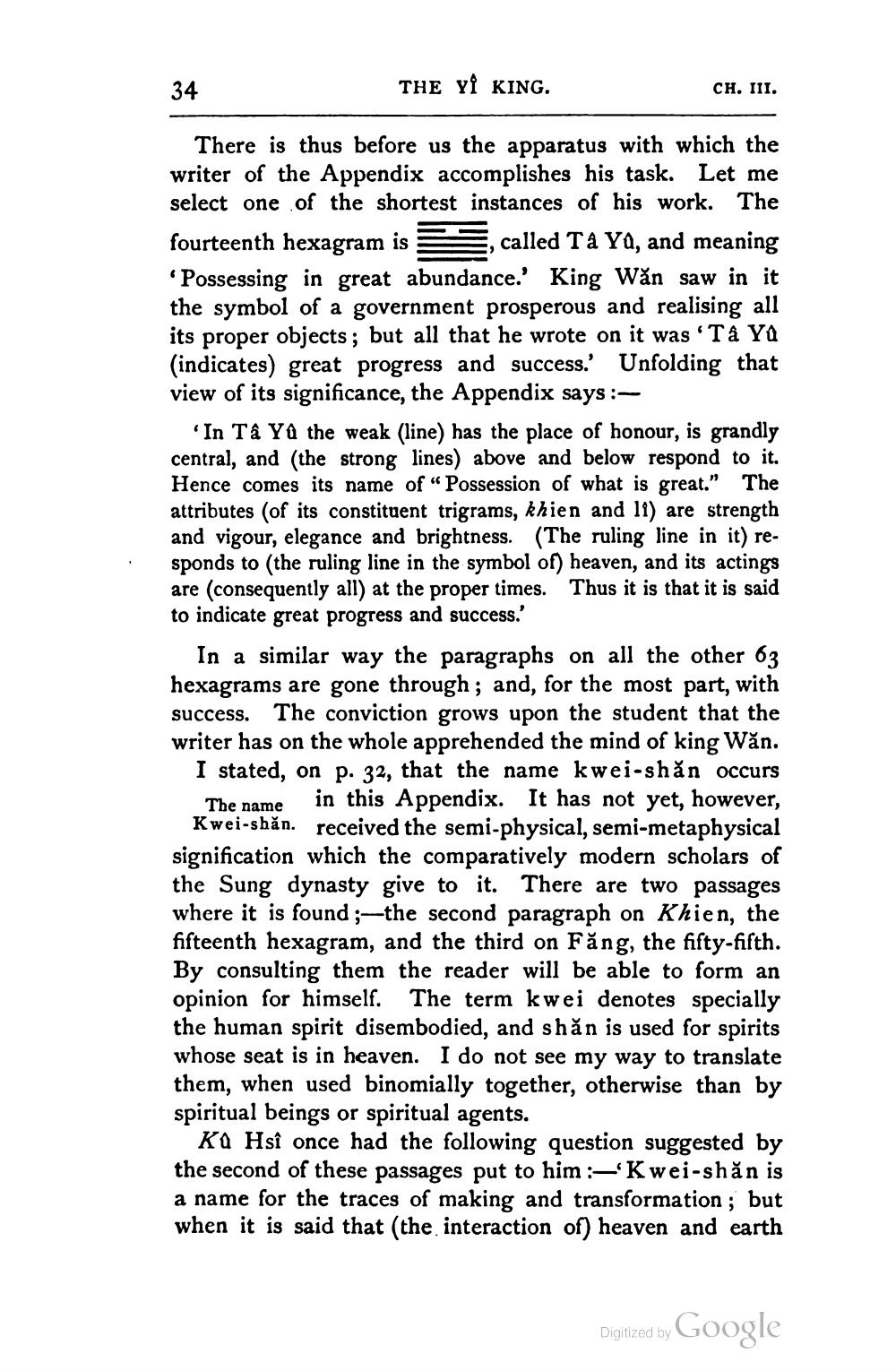________________
34
THE YÎ KING.
CH. III.
There is thus before us the apparatus with which the writer of the Appendix accomplishes his task. Let me select one of the shortest instances of his work. The fourteenth hexagram is called Ta YQ, and meaning 'Possessing in great abundance.' King Wăn saw in it the symbol of a government prosperous and realising all its proper objects; but all that he wrote on it was 'Tá Ya (indicates) great progress and success. Unfolding that view of its significance, the Appendix says:
'In Tâ Yû the weak (line) has the place of honour, is grandly central, and the strong lines) above and below respond to it. Hence comes its name of “Possession of what is great." The attributes (of its constituent trigrams, khien and 11) are strength and vigour, elegance and brightness. (The ruling line in it) responds to the ruling line in the symbol of heaven, and its actings are (consequently all) at the proper times. Thus it is that it is said to indicate great progress and success.
In a similar way the paragraphs on all the other 63 hexagrams are gone through; and, for the most part, with success. The conviction grows upon the student that the writer has on the whole apprehended the mind of king Wăn.
I stated, on p. 32, that the name kwei-shăn occurs
The name in this Appendix. It has not yet, however, Kwei-shăn. received the semi-physical, semi-metaphysical signification which the comparatively modern scholars of the Sung dynasty give to it. There are two passages where it is found ;-the second paragraph on Khien, the fifteenth hexagram, and the third on Făng, the fifty-fifth. By consulting them the reader will be able to form an opinion for himself. The term kwei denotes specially the human spirit disembodied, and shăn is used for spirits whose seat is in heaven. I do not see my way to translate them, when used binomially together, otherwise than by spiritual beings or spiritual agents.
KO Hsî once had the following question suggested by the second of these passages put to him :- Kwei-shăn is a name for the traces of making and transformation ; but when it is said that (the interaction of) heaven and earth
Digitized by Google




